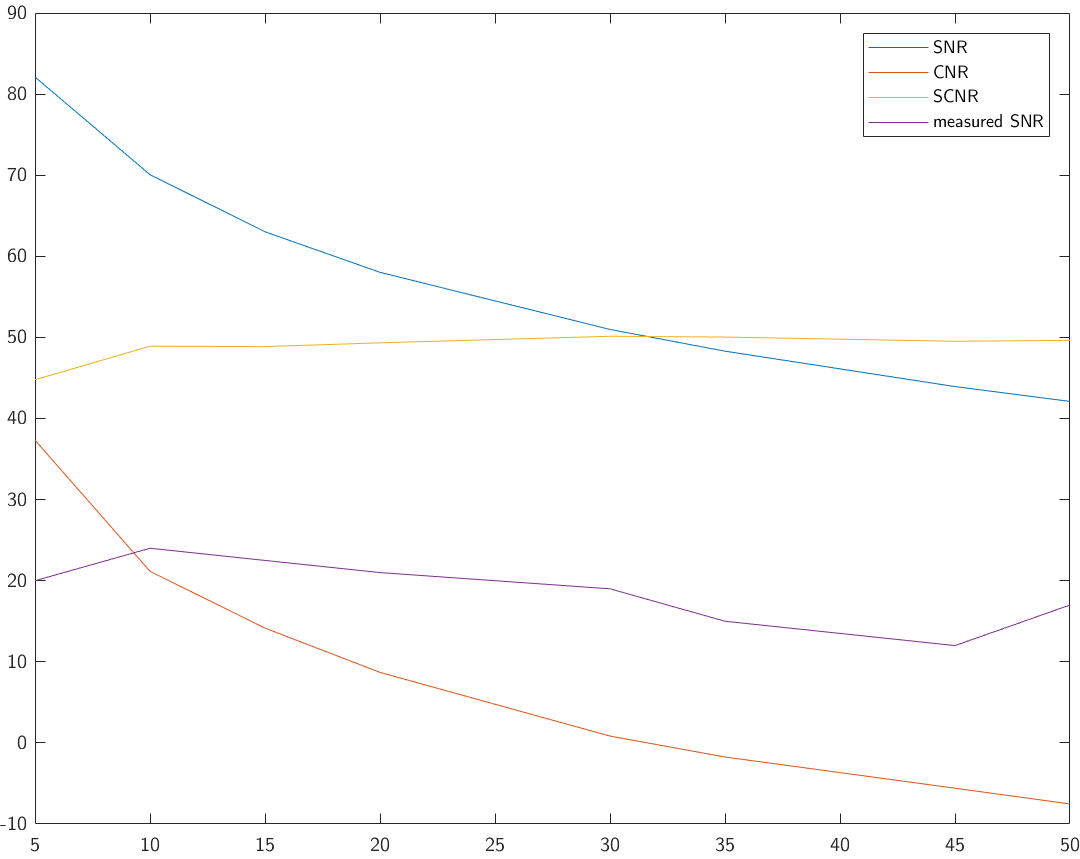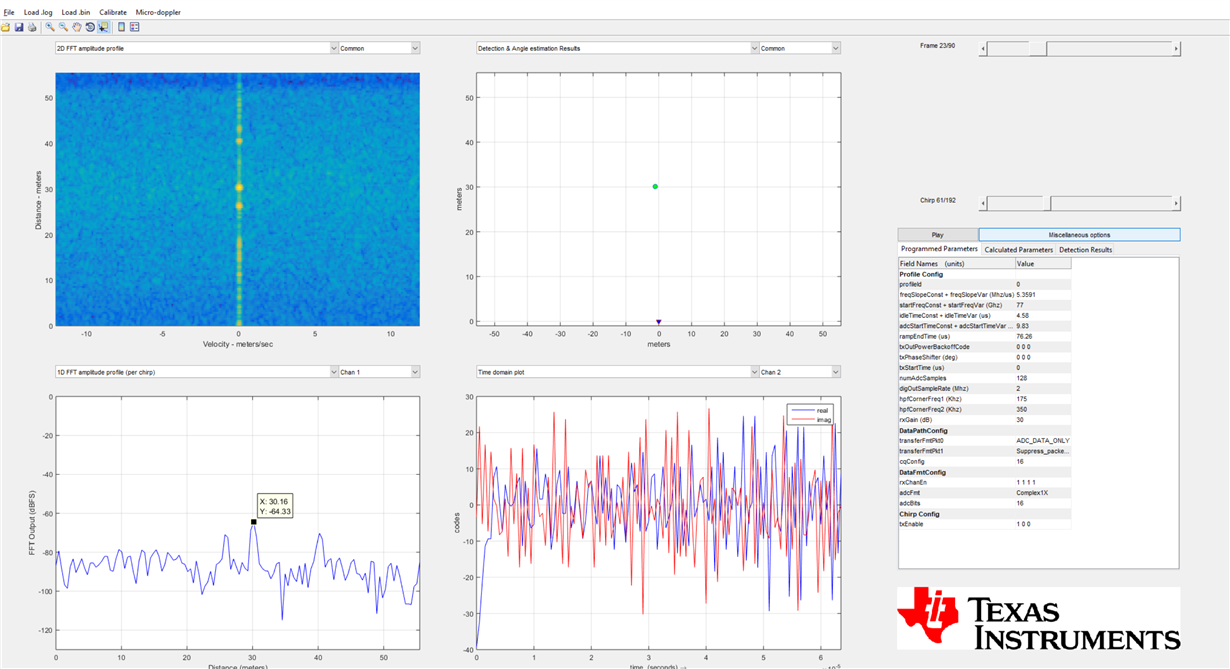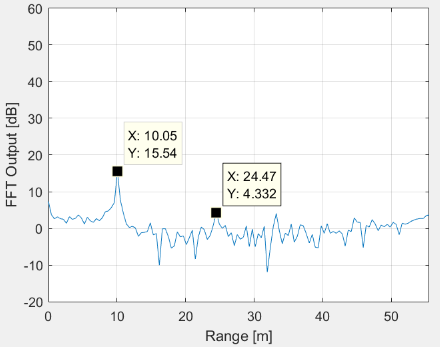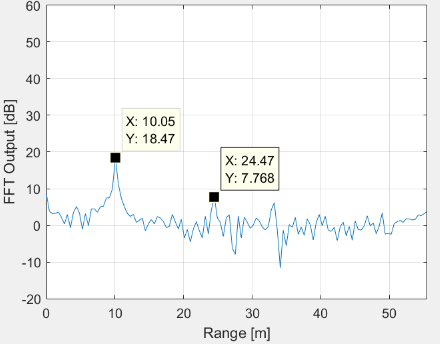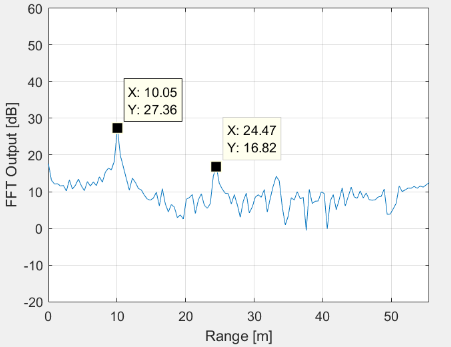Other Parts Discussed in Thread: IWR1443
Hello everyone,
like stated in another thread (https://e2e.ti.com/support/sensor/mmwave_sensors/f/1023/t/695708
I designed a waveform for up to 50m and took some measurements in ~5m steps from 5 to 50m with an object in boresight. I was using a corner reflector with about 110 m².
The measurements were taken outside on an area with asphalt. So I calculated the theoretical SNR as well as CNR (clutter to noise ratio) and based on this the SCNR. I then compared these theoretical values with my actual measured values.
In this plot you can see the mentioned values (sorry for the missing axes labels - x axis: range in m, y axis: power in dB):
So you can see that the "measured SNR" curves matches the SCNR better than the SNR curve (no surprise). But there is also a difference of about ~25 dB.
I was wondering where this difference comes from. I first thought about saturation, because the RCS of the reflector is quite high. But I think that you should see this in the "FFT Output" of the PostProc tool in dBfs (because it then should be higher, right?).
Do you have any ideas of this? Can you please give me any hints on where to look at or where this huge mismatch / gap of theoretical ad measured values could be based on? (I know that errors of ~10 dB are not unlikely, but I think 25 dB is a lot).
Thank you very much,
Enric
You can take information about the config I used from this screenshot (target was at ~30m):


